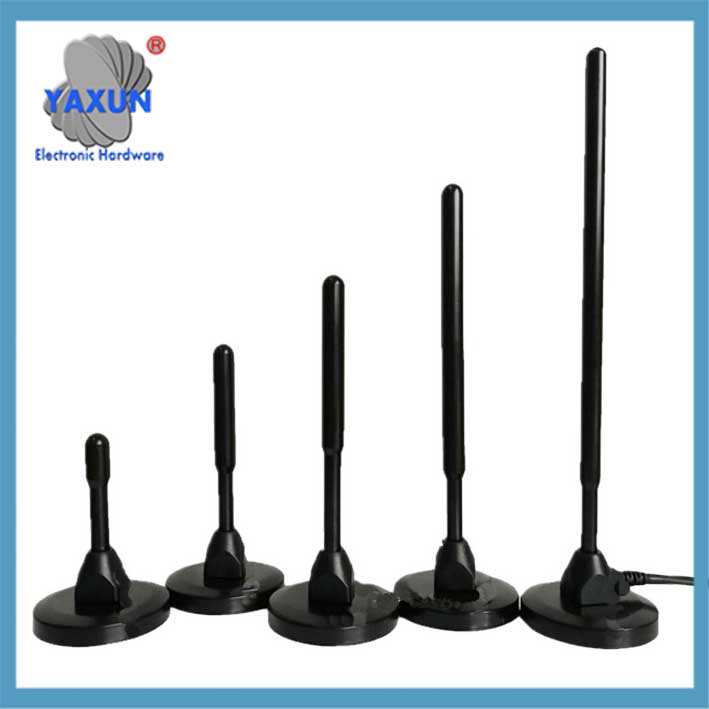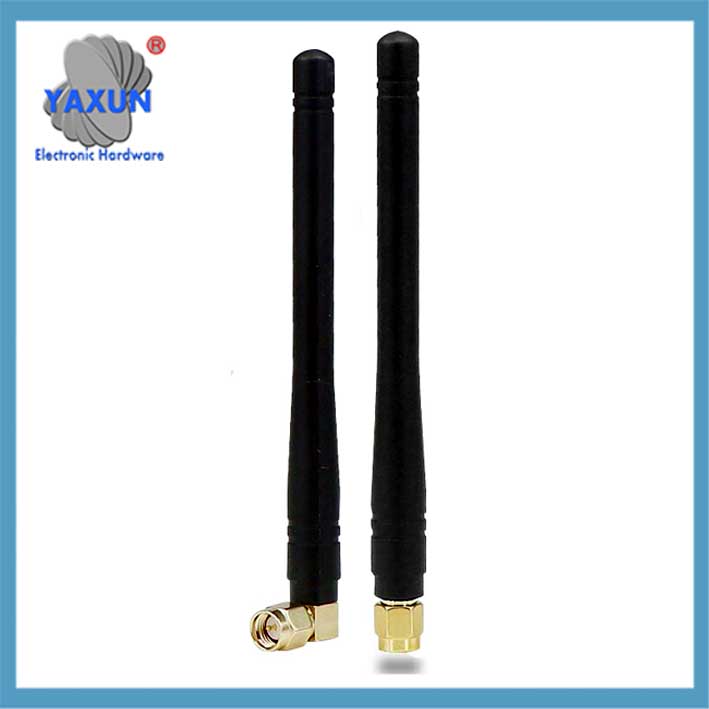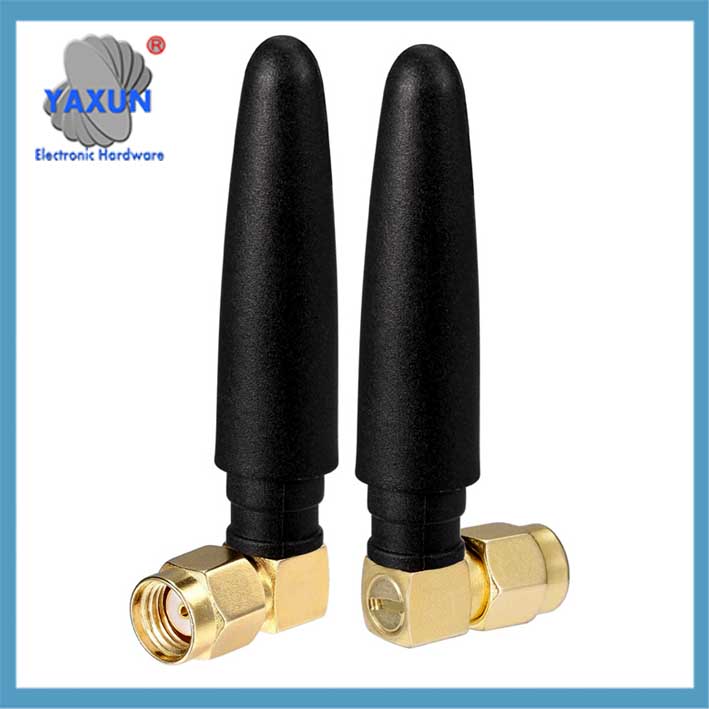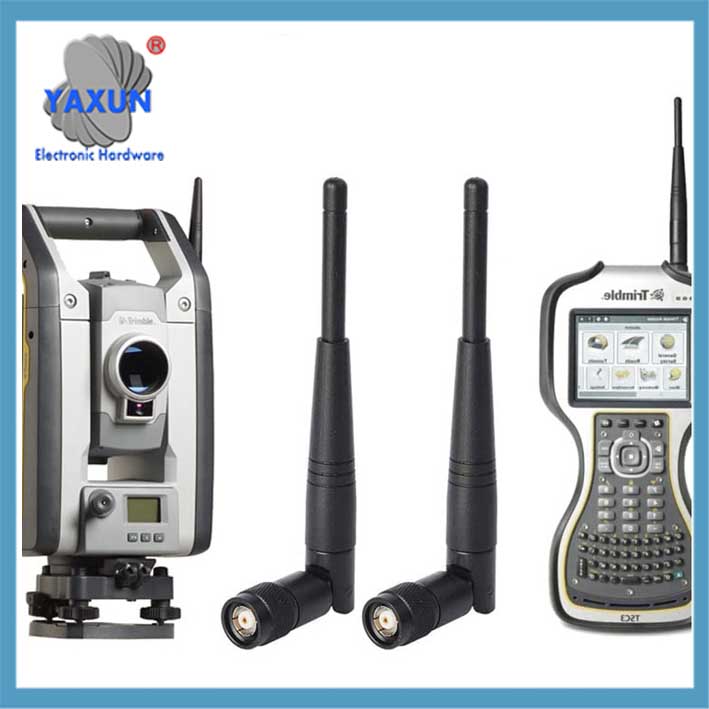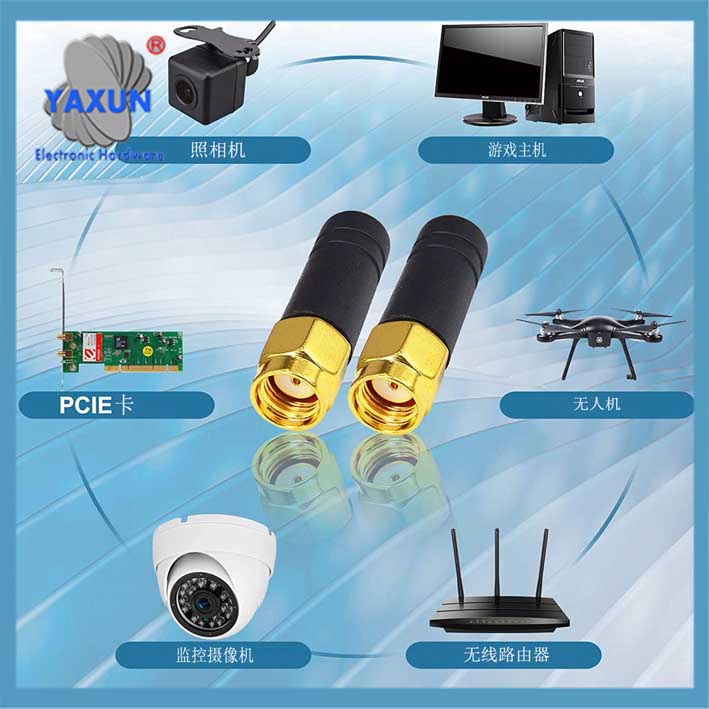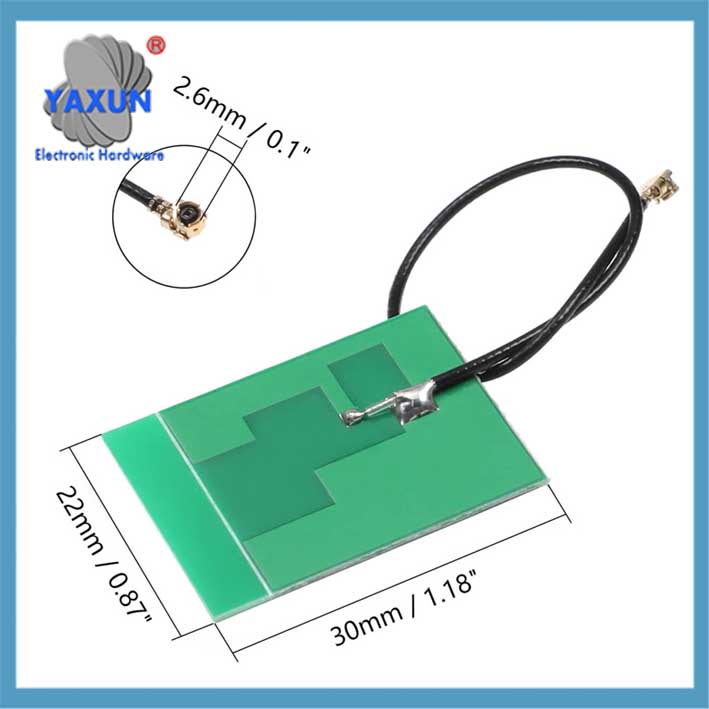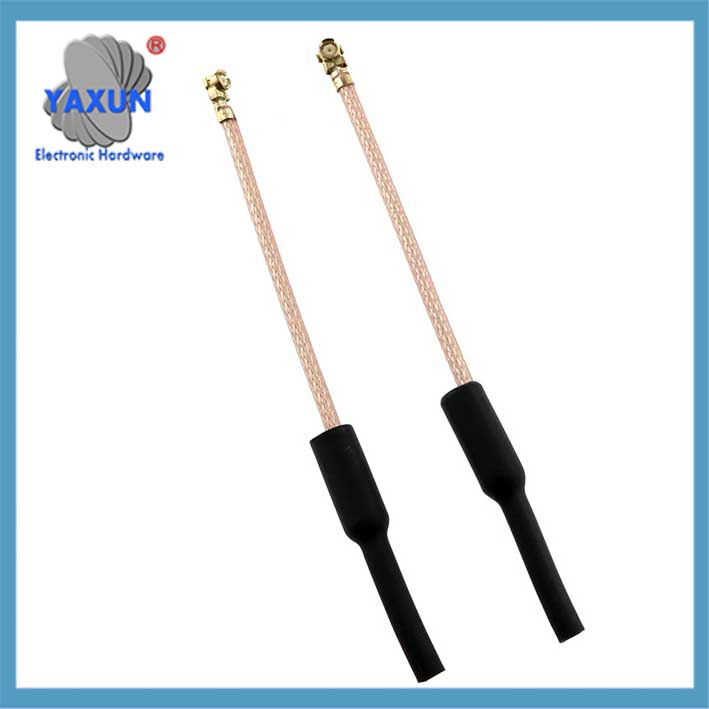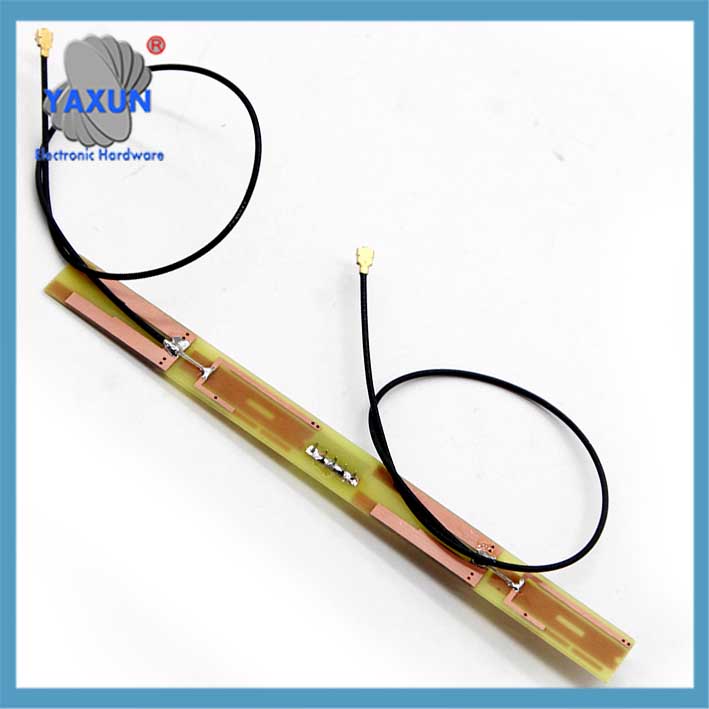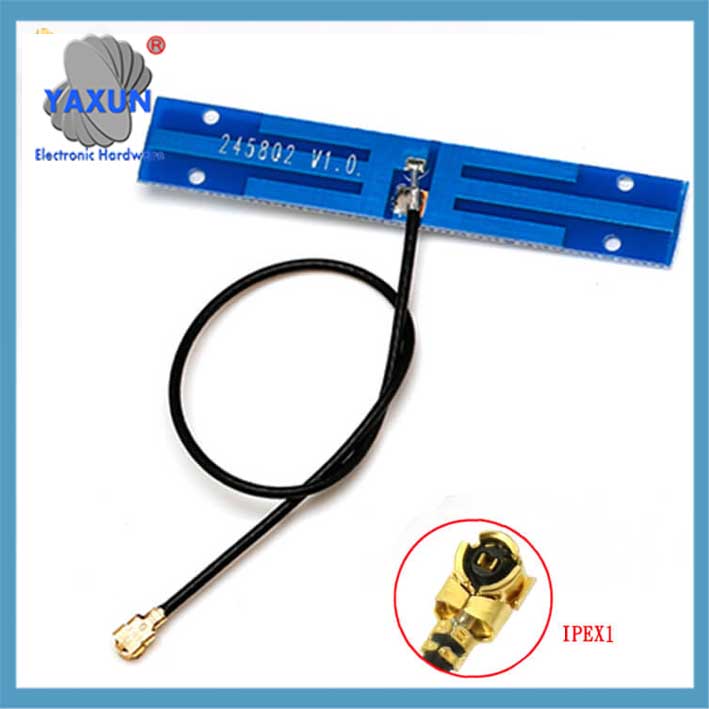catégories de produits
- Faisceau de câbles personnalisé 33
- Moyeux 47
- Fournisseurs de commutateurs électroniques 5
- Câbles coudés USB 27
- Antenne terminale 9
- Câbles médicaux 37
- Câbles USB4 11
- Câbles à broches POGO 10
- Câbles étanches 28
- Câbles de type C et adaptateur 40
- Câbles USB5 9
- Câbles de verrouillage à vis USB 26
- Connecteurs et câbles 18
Mots clés du produit
Messages récents
Qu'est-ce qu'une antenne wifi? Antenne de bâton WiFi & Fonction d'antenne intégrée
Une antenne Wi-Fi est un composant d'un appareil Wi-Fi (comme un routeur ou un adaptateur) qui transmet et reçoit des ondes radio transportant des données. Ces ondes permettent aux appareils de se connecter à un réseau sans fil, permettre un accès Internet. Les antennes peuvent être externes (comme un bâton ou un panneau) ou intégré dans un appareil.
Une antenne Wi-Fi est un composant d'un appareil Wi-Fi (comme un routeur ou un adaptateur) qui transmet et reçoit des ondes radio transportant des données. Ces ondes permettent aux appareils de se connecter à un réseau sans fil, permettre un accès Internet. Les antennes peuvent être externes (comme un bâton ou un panneau) ou intégré dans un appareil.
je. Basic principles and functions
WiFi antennas are core components of wireless communication systems. Their core function is to achieve the mutual conversion between electrical signals and electromagnetic waves, which directly affects the transmission distance, signal stability and anti-interference ability. This principle is based on the propagation law of electromagnetic waves described by Maxwell’s equations, and optimizes signal transmission efficiency through polarization (such as vertical/horizontal polarization).
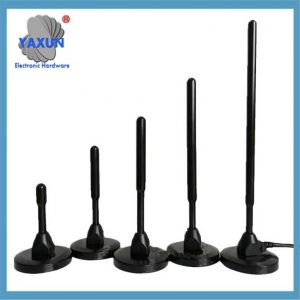 2.4Antenne d'aspiration G |
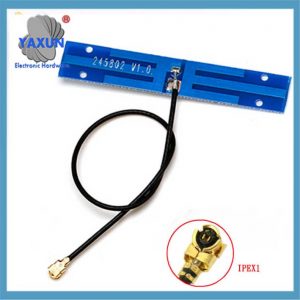 50*9mm High performance 3dBi 2.4G WIFI Built-in PCB antenna RF1.13 cable IPEX/U.FL port |
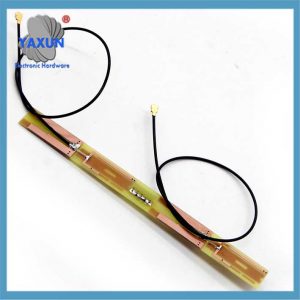 110*10mm WiFi built-in PCB antenna 2.4G/5.8G dual-band antenna |
Ii. Classification and structural characteristics
Built-in antenna
Mainly used in mobile devices such as mobile phones and laptops, it can be divided into standard type (such as magnetic dielectric antenna) and non-standard type. Parmi eux, standard antennas need to rely on process optimization (such as LTCC technology) due to bandwidth and volume limitations.
External antenna
Commonly found in wireless routers, it uses a sleeve rod design or a magnetic base to enhance signal reception. Par exemple, the ASUS TUF BE9400 router is equipped with 6 external antennas, supporting three bands (2.4GHz/5GHz/6GHz) and WiFi 7’s MLO multi-link operation technology.
Types of Wi-Fi Antennas:
Omnidirectional Antennas:
These antennas broadcast signals in all directions, providing wide coverage within a specific area.
Directional Antennas:
These antennas focus signals in one specific direction, suitable for longer range or point-to-point connections.
USB WiFi Antennas: These antennas connect to a computer’s USB port and provide wireless connectivity. They can be used to improve signal strength or range, especially in areas with poor WiFi reception.
Built-in Antennas: Many devices, including laptops, smartphones, and some routers, have antennas integrated into their design.
Function of Wi-Fi Antennas:
Transmitting:
Wi-Fi antennas convert digital data into radio waves and send them to other devices.
Receiving:
Antennas also capture radio waves from other devices, convert them back into digital data, and make the data available to the connected device.
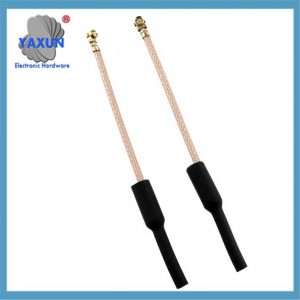 FPV Antenna 5.8GHz Drone IPEX Antenna |
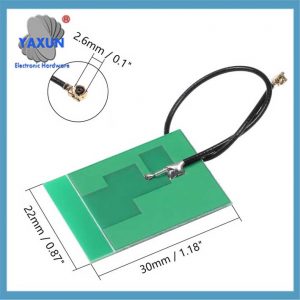 25*22mm 3dBi high gain WIFI built-in PCB antenna |
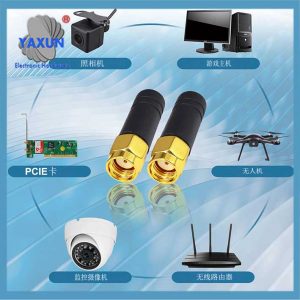 RP SMA male 2.4G glue stick antenna omnidirectional drone, surveillance antenna |
III. Core performance parameters Gain and Directivity: High-gain directional antennas (such as CPE) are suitable for long-distance coverage, while omnidirectional antennas are suitable for multi-angle transmission; however, an increase in the number of antennas may introduce coupling interference, and it is necessary to balance gain and layout rationality.
Band compatibility: The frequency bands (such as 2.4G/5G/6GHz) and connector types (such as SMA, TNC) supported by the device must be matched.
Polarization mode: The combination of vertical and horizontal polarization can reduce signal attenuation and improve wall penetration.
Iv. Evolution of multi-antenna technology
Beamforming
By coherently superimposing multi-antenna signals, the signal strength is enhanced in a specific direction (such as increasing the 3dB array gain), but the incoherent loss caused by delay differences must be avoided.
Multi-band phased array technology
The multi-band antenna solution proposed by Huawei’s patent supports 5G, WiFi and Bluetooth, and can dynamically adapt to different communication standards to improve device compatibility.
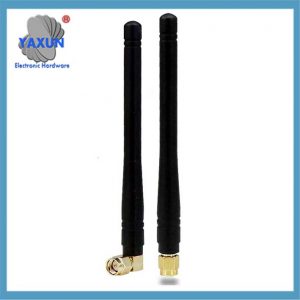 Antenne WiFi Indoor Glue Stick Antenne SMA Antenne |
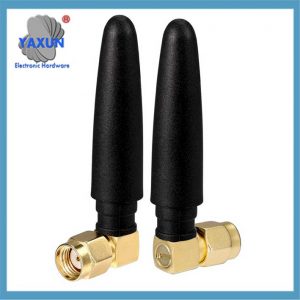 2.4GHz 5GHz Dual Band WiFi Wireless Router Bluetooth Antenna |
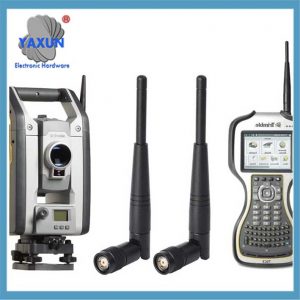 RP-TNC interface 5dbi 2.4G wifi router antenna |
V. Design Practice Suggestions
Antenna Layout: It is recommended that external antennas be distributed at an angle of 45°~90°, taking into account both omnidirectional coverage and directional enhancement.
Quantity and Coupling Control: The number of router antennas needs to be optimized according to the aperture area to avoid blind stacking and performance degradation.
Through the above technological evolution, WiFi antennas are developing in the direction of high frequency bands, low latency, and adaptive multi-scenario. Par exemple, the tri-band support of ASUS WiFi 7 routers and Huawei’s multi-standard fusion design are typical representatives.
Contactez-nous
En attente de votre email, nous vous répondrons dans les 12 heures avec des informations précieuses dont vous aviez besoin.
 English
English العربية
العربية bosanski jezik
bosanski jezik Български
Български Català
Català 粤语
粤语 中文(漢字)
中文(漢字) Hrvatski
Hrvatski Čeština
Čeština Dansk
Dansk Nederlands
Nederlands Eesti keel
Eesti keel Suomi
Suomi Français
Français Deutsch
Deutsch Ελληνικά
Ελληνικά עברית
עברית Magyar
Magyar Italiano
Italiano 日本語
日本語 한국어
한국어 Latviešu valoda
Latviešu valoda Bahasa Melayu
Bahasa Melayu Norsk
Norsk پارسی
پارسی Polski
Polski Português
Português Română
Română Русский
Русский Cрпски језик
Cрпски језик Slovenčina
Slovenčina Slovenščina
Slovenščina Español
Español Svenska
Svenska தமிழ்
தமிழ் ภาษาไทย
ภาษาไทย Tiếng Việt
Tiếng Việt
